
A mysterious noise you don’t know the source of is one of the most stressful things that can happen during vehicle ownership. If your Hyundai Santa Fe is making a sloshing sound while driving it, this is the guide for you.
If your Santa Fe makes a sound like sloshing water while driving, this is undoubtedly a cause for concern. There are several reasons your vehicle makes a sloshing sound; we’ll review them below.
Hyundai Santa Fe Sloshing Sound Repair Reference Table

| Sloshing Sound Location | Happens When | Potential Cause |
|---|---|---|
| Ahead of Driver | Revving the Engine | Air in the Cooling System, Low Coolant |
| Under/Behind Driver | Braking/Accelerating | Gasoline in Tank Sloshing |
| Left/Right of Driver | Turning, Opening Doors | Clogged Door Drain |
| Ahead of Driver | Turning | Clogged Evaporator Tube (AC), Clogged Cowl Drain |
Causes of Sloshing Water Sounds & How To Fix It
When trying to figure out what is causing a sloshing water sound in your Hyundai Santa Fe, the most important thing you can do is figure out WHERE it is coming from. Then, use the table above to help you narrow down the potential causes.
There may be a few causes for why your vehicle is making that sloshing sound. If the sound is happening while you’re driving, it likely indicates that water is trapped somewhere in your Santa Fe, a fluid is low in one of your systems, or air has gotten someplace it does not belong.
Clogged Evaporator Drain
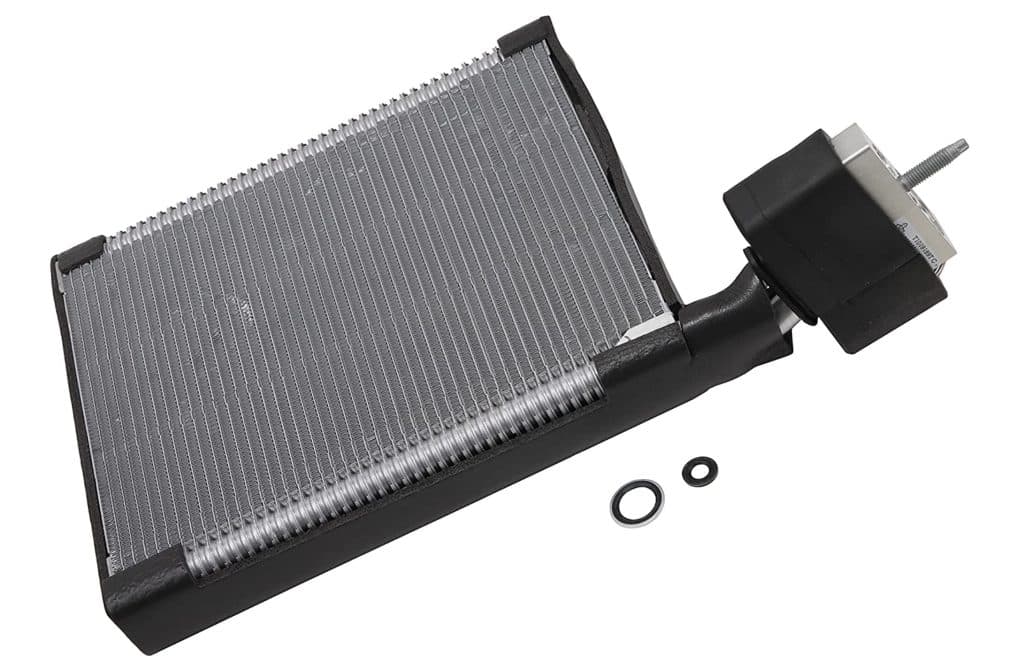
A common cause for water sloshing is a clogged EVAP drain. Water frequently needs to be drained between the cooling system. If the drain has become blocked by sediment buildup, the water won’t drain and will instead become trapped in your Santa Fe’s body.
The water will collect in the pan. You’ll generally hear this sloshing sound near your vehicle’s dashboard. It’s especially noticeable when you’re taking turns.
It’s usually accompanied by a moldy smell if left too long. In extreme cases, your floor mat may even feel damp.
Fix for Clogged Evaporator Drain
The easiest way to tell if your evaporator drain is clogged is to start your Santa Fe and let it idle for a while with the AC on full blast.
Take a look under the front of the vehicle. If no water leaks onto the ground after running the air conditioning for a while, that indicates that the drain hole is clogged.
A clogged evaporator drain tube does more than let water build up and create a water-sloshing sound. It can also create a hospitable place for mold and bacteria to grow. Your Santa Fe’s AC will likely smell bad.
Thankfully the fix for this is straightforward and not usually too expensive. If you know a little about vehicles, you might even be able to do it yourself.
Locate the evaporator drain tube under your Santa Fe, blow some condensed air into the tube, or insert a flexible metal rod. Trapped water will likely rush out at this point, so be careful.
Low Coolant
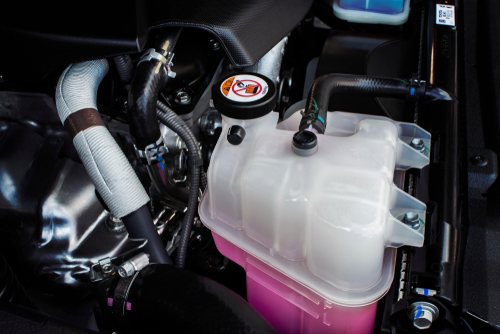
If your Toyoa Santa Fe is low on coolant, you’ll be able to hear the remaining liquid sloshing around right after you start your vehicle and when you’re driving.
Low coolant and air in the system will make a sloshing sound when the engine speed changes. However, it should not react to any other driving condition.
Fix for Low Coolant
You will need to fill the system back up with coolant. But you’ll need to address why the coolant leaked out in the first place. If you don’t, your vehicle will overheat, and the repair expense will significantly increase.
Inspect the radiator, hoses, water pump, and thermostat housing for leaking coolant.
Air in Cooling System
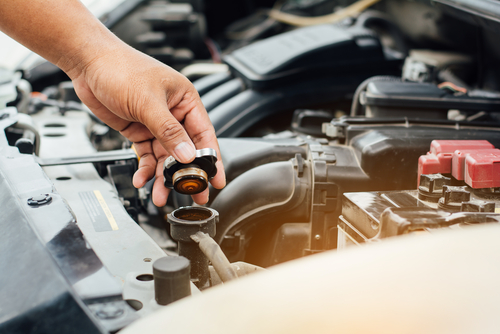
If your coolant levels are normal and your Santa Fe still makes that concerning sloshing sound after you turn it on, and while it’s idling and changes with RPM, you may have air in the cooling system.
This sound will come from the heater core behind the dashboard and can happen for many reasons. Test or replace the radiator cap if you don’t see a leak.
Fix for Air in Coolant System
You won’t want to leave air in your coolant system. It can cause the engine to overheat and result in damage. You’ll need to bleed the air from the cooling system, or you will need to have a mechanic do it for you.
Air in the cooling system can get trapped in a cylinder head and cause a “hot pocket” that can overheat even when the rest of the engine is running fine.
Clogged Door Drains
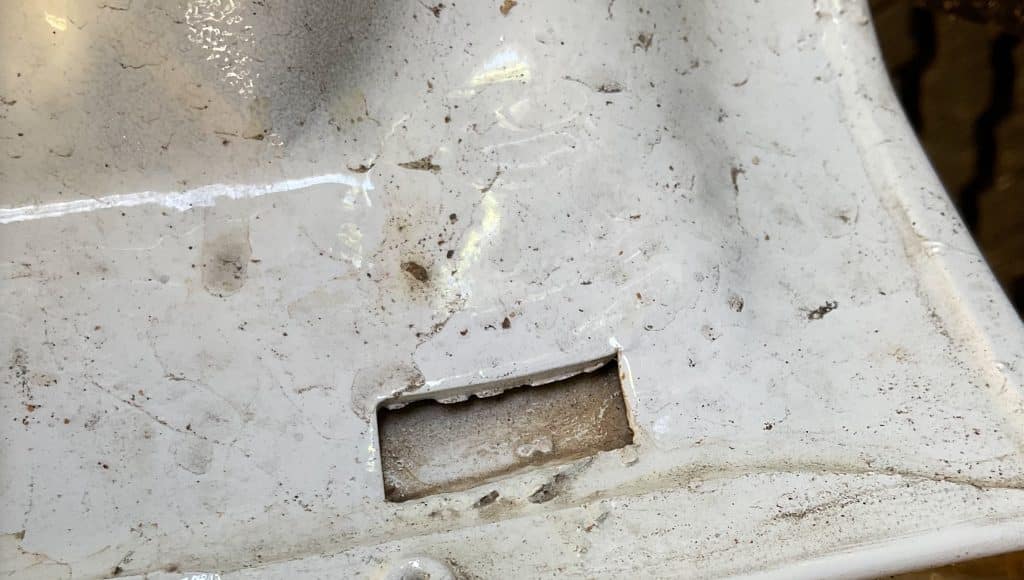
It might surprise you that your Santa Fe’s body isn’t waterproof! But it’s true; rainwater sneaks into the its body from all sorts of places. One of the most common locations is between the door and the windows, where rain can seep down and get into the door.
Because of this reason, vehicles are built with drains in the base of the doors. But over time, those drains can become blocked by dirt and debris. As a result, water will build up, and you’ll hear it as you drive.
Fix for Clogged Door Drains
Luckily this is a straightforward fix. Take your Santa Fe somewhere quiet, and swing the doors back and forth gently. You know this is it if you hear the vehicle make sloshing water sounds.
Take a bit of flexible wire and break up the debris until water comes out of the drain again.
While this is a simple fix, you’ll want to take care of this problem quickly. Leaving water to linger in the body of your vehicle can result in mold, a problem that will not only smell but could result in health problems.
Fuel Tank
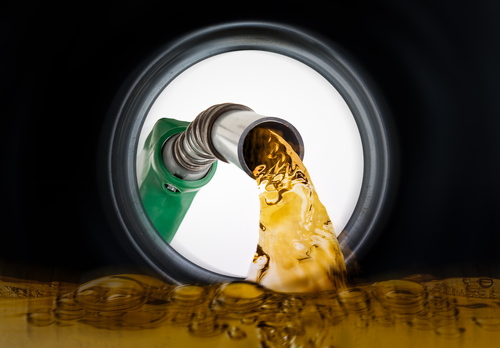
It doesn’t matter how large or small your Santa Fe’s fuel tank may be. Sloshing fuel can happen when there’s the right amount of it. You may even feel it moving on a vehicle with a huge fuel tank as you come to a hard stop.
Sloshing Fuel Fix
Sloshing gas is not something that you need to repair yourself. Instead, burning off the extra fuel should clear the problem.
Ridding Your Hyundai Santa Fe of Sloshing Water Sounds
There are several reasons your Hyundai Santa Fe could be making sloshing water sounds, but many of them are easy fixes. Hopefully, this guide helped you figure out where it’s coming from.
